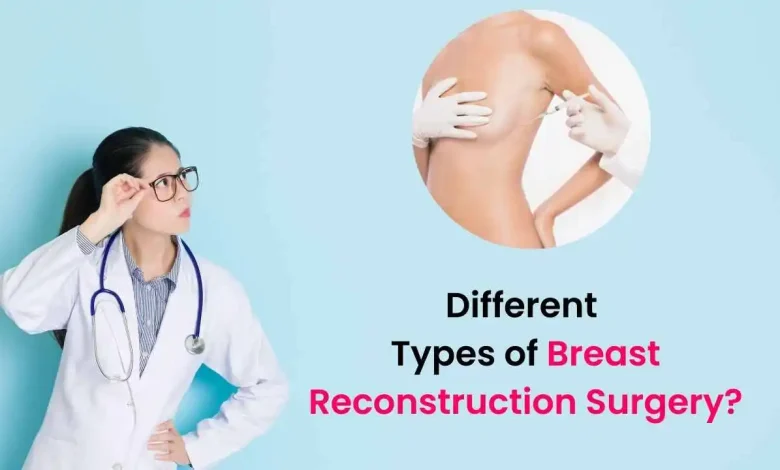Breast Reconstruction: Treatment Options Post Mastectomy

Breast reconstruction is an important part of the healing process for many women who have undergone a mastectomy, whether due to breast cancer or other medical conditions. The emotional and psychological impact of losing one or both breasts can be profound, and breast reconstruction treatment offers an opportunity to restore a sense of normalcy and confidence.
Understanding the available treatment options post-mastectomy is crucial for making informed decisions about your care. In the post below, we will take a detailed look at the treatment options and how you can go about them.
Understanding Breast Reconstruction
Breast reconstruction treatment involves rebuilding the breast shape after a mastectomy. This process can be performed immediately following the mastectomy (immediate reconstruction) or at a later time (delayed reconstruction). The decision on timing depends on several factors, including the patient’s health, the need for additional treatments like radiation, and personal preferences.
This treatment can be achieved through various techniques, including implants, autologous tissue (tissue from other body parts), or a combination. Each method has advantages and considerations, which will be discussed below.
Types of Breast Reconstruction Treatments
- Implant-Based Reconstruction
This is the most common method of breast reconstruction, involving the placement of saline or silicone implants to recreate the breast mound. Implants can be placed under the chest muscle or directly behind the breast tissue.
Advantages: The procedure is relatively straightforward, with shorter surgery and recovery times. It is also less invasive than tissue-based reconstruction.
Considerations: Implants may not feel as natural as tissue-based reconstructions, and complications such as implant rupture, capsular contracture (hardening of tissue around the implant), and the need for future surgeries are possible.
- Autologous Tissue Reconstruction
- TRAM Flap (Transverse Rectus Abdominis Muscle Flap): In this method, tissue from the lower abdomen (including skin, fat, and muscle) helps create a new breast. This can result in a more natural look and feel compared to implants.
- DIEP Flap (Deep Inferior Epigastric Perforator Flap): Similar to the TRAM flap, the DIEP flap uses skin and fat from the lower abdomen but spares the muscle, reducing abdominal weakness post-surgery.
- Latissimus Dorsi Flap: Tissue from the back is used to reconstruct the breast. This method can be combined with an implant for a more balanced result.
Advantages: Tissue-based reconstructions often result in a more natural appearance and feel. There is no risk of implant-related complications, and the reconstructed breast ages more naturally over time.
Considerations: These procedures are more complex and involve longer surgery and recovery times. There may also be scarring at the donor site (where the tissue is taken from), and not all patients are suitable candidates for this type of reconstruction.
- Combination of Implant and Autologous Tissue
This approach combines the benefits of both implants and autologous tissue. Often, an implant is used to achieve the desired volume, while tissue from another part of the body is used to provide a more natural contour and feel.
Advantages: The combination approach can offer the best of both worlds, with natural-looking results and sufficient volume for breast reconstruction.
Considerations: As with any complex surgery, risks include a longer recovery time and the potential for complications from both the implant and tissue harvest sites.
Considerations for Breast Reconstruction
Choosing the right breast reconstruction option depends on multiple factors, including:
- Overall Health: The patient’s general health and any underlying medical conditions may influence the choice of reconstruction method. For instance, patients with diabetes, heart conditions, or obesity may face higher risks during complex surgeries.
- Cancer Treatment: If additional treatments like radiation therapy are required post-mastectomy, they may impact the timing and type of reconstruction. Radiation can affect the skin’s elasticity and healing capacity, making certain reconstruction options less viable.
- Personal Preferences: The patient’s preferences regarding the size, shape, and feel of the reconstructed breast play a crucial role in decision-making. Some women prefer the simplicity of implants, while others seek the natural look and feel of tissue-based reconstruction.
- Recovery Time: Different reconstruction methods have varying recovery times. Implant-based reconstruction generally involves shorter recovery periods, while autologous tissue reconstruction requires longer healing.
- Long-Term Outcomes: It’s essential to consider the long-term outcomes, including the potential need for future surgeries, the longevity of the implants, and how the reconstructed breast will age over time.
Conclusion
Breast reconstruction post-mastectomy is a deeply personal and significant decision that involves understanding the various treatment options, assessing individual health needs, and considering personal preferences. Whether you opt for implant-based reconstruction, autologous tissue reconstruction, or a combination of both, the ultimate goal is to restore not just the physical appearance but also the emotional well-being of those affected by breast cancer.
Nanavati Max Hospital, with its expert surgical team, advanced technology, and comprehensive care approach, stands out as a leading choice for breast reconstruction treatment in India. By choosing a facility that prioritises patient care and offers a wide range of reconstruction options, you can be confident in receiving the best possible outcome for your breast reconstruction journey.



